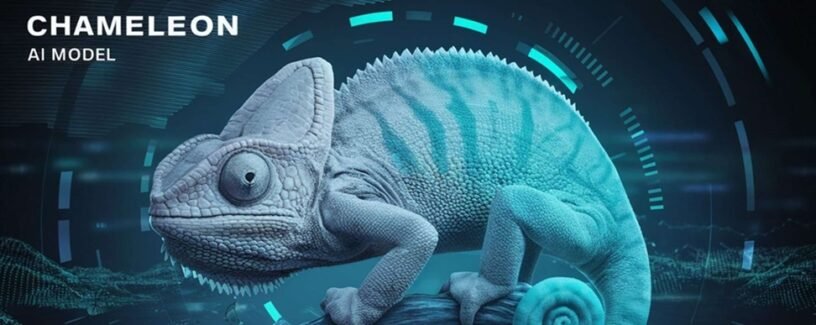Imagine an AI that can not only write a captivating story but also conjure up the characters and scenes in vivid detail. That’s the magic behind Meta’s Chameleon, a cutting-edge multimodal model that’s shaking things up in the world of artificial intelligence.
Here’s the thing: most AI models specialize in one area, like processing text or recognizing images. Chameleon breaks the mold by being truly multimodal, meaning it understands and generates both text and images seamlessly.
Let’s unpack this with an example. Think of a travel blog. Traditionally, you’d have separate sections for text descriptions and photos. But Chameleon could take a single prompt, say “Write a blog post about the Great Barrier Reef,” and generate a complete piece with captivating text describing the underwater world, interspersed with stunning images of coral reefs and exotic fish.
This fusion of abilities opens doors to exciting possibilities. Imagine creating social media posts that automatically generate both eye-catching visuals and engaging captions. Or, picture educational tools that combine interactive text with relevant images, making learning more fun and immersive.
But Chameleon’s talents go beyond mere aesthetics. It can also perform impressive feats of multimodal reasoning. Confused? Here’s how it works:
- Visual Question Answering: Imagine showing Chameleon a picture of a busy kitchen and asking, “What appliance is used for baking?” It would analyze the image and text descriptions (like oven mitts or a baking sheet) to answer your question.
- Image Captioning: Give Chameleon a photo of a birthday party and it might create a caption like “Lively celebration as Sarah turns 8!”
What’s truly remarkable is that Chameleon achieves these feats while maintaining strong performance in text-only tasks like reading comprehension and commonsense reasoning. It’s like having two super-powered AIs in one!
Now, how does Chameleon achieve this magic? It uses a special technique called “early-fusion,” where text and image data are processed together from the get-go. This allows Chameleon to build a rich understanding of the world where text and visuals complement each other.
Here’s the exciting bit: Chameleon is still under development, but early signs are promising. Research suggests that users actually prefer multimodal documents created by Chameleon compared to those made manually. This points towards a future where AI can assist us in creating richer and more engaging content across various platforms.
While details of competing models from OpenAI and Google remain under wraps, Meta’s Chameleon is definitely a strong contender in the race for multimodal AI supremacy. With its ability to generate creative text-image combos and tackle complex reasoning tasks, Chameleon has the potential to revolutionize the way we interact with information and create content in the digital age.

Meta Chameleon: Frequently Asked Questions
What is the use of CM3Leon?
Unfortunately, I couldn’t find any information about “CM3Leon” in relation to Meta Chameleon. It’s possible CM3Leon is an internal project name or code not publicly known.
Meta Chameleon itself seems to be a broader term that might not refer to a single product.
Here are some possibilities:
- Meta AI Integration: Meta Chameleon could be a codename for integrating Meta AI features (like image generation) into various Meta products like Facebook Messenger or Instagram.
- Project under Meta: Meta Chameleon could be the name of a secretive project within Meta that isn’t publicly known yet.
Without more context, it’s difficult to say for sure what CM3Leon is.
How to use Meta AI image?
Meta AI image generation can be accessed through various Meta messaging apps like WhatsApp and Instagram. Here’s a breakdown:
- Using WhatsApp:
- Open a chat (individual or group).
- Type “/imagine” followed by your desired image description (e.g., “/imagine a cat playing chess”).
- Send the message.
- Meta AI will process your request and generate an image based on your description.
- Using Instagram (similar to WhatsApp):
- Open a direct message chat.
- Send a message using the format “/imagine” followed by your image description.
- Meta AI will generate and send the image within the chat.
Additional Points:
- There’s a daily limit of 25 image generations.
- You can refine the generated image by tapping and holding on it, then selecting “Reply” and providing a new description.
- Meta AI is still under development, so results may vary.




Leave a Reply